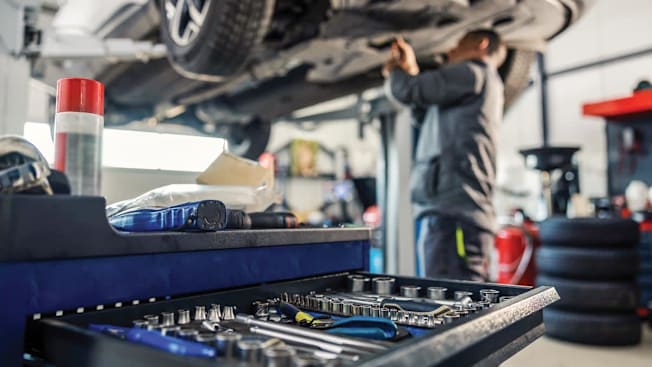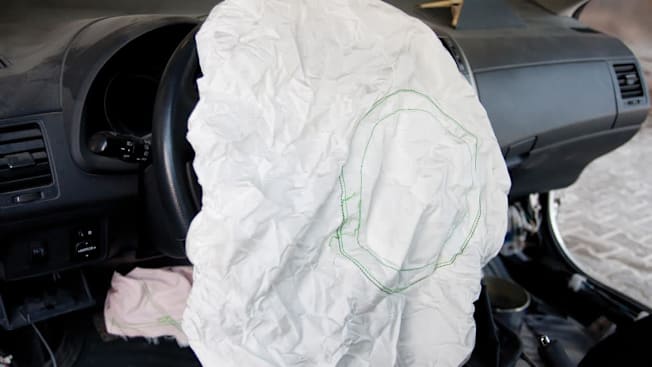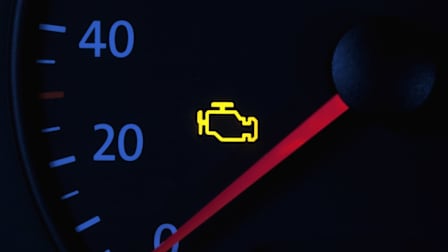Get Your Car Fixed for (Almost) Free
You have to know about these ‘secret’ warranties in order to benefit

Nothing is more frustrating to a car owner than a vehicle that needs an engine replacement or whose paint starts peeling just a few years after leaving the dealer’s lot. Having to make expensive post-warranty repairs sends a signal to consumers that says: You’re getting ripped off.
But you can often save hundreds or even thousands of dollars in repair bills by taking advantage of special unadvertised automaker programs that provide free or discounted service work. Though manufacturers often call these programs “service actions” or “customer satisfaction campaigns,” many people refer to them as secret or hidden warranties because they’re rarely announced to the public.
- Secret or Hidden Warranties: How Secret Are They? Problems With Secrecy Where to Learn More
How Secret Are They?
Often, when an automaker initiates a service campaign, it sends a notification letter to all known owners. But the second or third owners of that car might not receive it. Even among those who do receive the communications, the letter may be mislaid or mistakenly thrown away. In other cases, though, there’s no advance notice, and car owners find out about it only if a dealer tells them about the service campaign or they discover it by doing their own research.
“A good service adviser should check any and all possible factory warranties at the time of the write-up,” says Michael Crossen, a mechanic at CR’s Auto Test Center who is also an ASE-certified master technician with years of experience working in dealership service departments. “When I was a service adviser, I would even mention them to the customer so they were aware, even if the warranty extension did not pertain to today’s visit, it was just good practice.”
All the warranty extensions we’ve found are included in technical service bulletins (TSBs) that automakers send to their dealers’ service departments. A TSB describes how a technician should determine if a problem is applicable to the service bulletin and then what should be done. It will list part numbers (which are often updated or redesigned parts) and the amount of labor the technician will be paid for. The TSB will also include the procedure for the work to be carried out.
A TSB usually doesn’t mean a free repair, but a small number of them also have information about special warranties related to the problem or other remedies the carmaker is offering to owners.
A benefit of TSBs is that they save money for the owner because the technician doesn’t need to spend time diagnosing a problem, which the owner would pay for in labor costs if the vehicle is out of warranty.
If your car develops a problem that’s not related to wear and tear or collision damage, it might be worth checking to see whether there’s a TSB related to it.
Even if no warranty extension is offered, a TSB tells you that the problem is known to the automaker. Talk with your service adviser to see if there are any coupons available that could be applied to the repair. It also doesn’t hurt to just ask if the dealership could help you out by discounting the repair. The dealer may need to talk with the manufacturer to determine who pays for the discount.
Problems With Secrecy
It’s easy to understand why carmakers aren’t in a hurry to broadcast the existence of a free fix. Usually, only a small percentage of a given model’s production run will exhibit the problem. Carmakers don’t want tens of thousands of customers who don’t have a problem showing up at dealerships demanding the free repair “just in case.”
But the hush-hush approach has several downsides:
• Once the basic warranty has expired, car owners often go to an independent repair shop rather than to the dealer. In that case, they may end up paying for an expensive repair that could have been done for free.
• Owners may be unaware that their problem is a common one that’s recognized by the automaker, which could be a key to getting a break on repair costs.
• TSBs can hint at a safety problem that the automaker doesn’t want to acknowledge.
That was the case with the faulty ignition switches on Chevrolet Cobalts and other models that General Motors recalled in 2014. The company had sent its dealers TSBs about those flimsy switches as early as 2005, but it apparently didn’t consider that a noteworthy safety problem at the time. Only after GM was successfully sued did the magnitude of the safety ramifications come to light.
Similarly, Toyota dealers received two service bulletins regarding faulty brakes on the 2007 to 2011 Toyota Camry Hybrid. Toyota notified owners of free repairs and offered a fairly generous warranty extension on some brake components.

Photo: Shutterstock Photo: Shutterstock
Different From Recalls
It’s also important to be aware that your car can be repaired for free as part of a recall. Unlike a TSB or a service campaign, official safety recalls are comprehensive, widely publicized, and good for the life of the vehicle.
Despite that, Carfax has calculated that as of August 2025, more than 3.3 million vehicles had urgent recalls instructing owners “Do Not Drive” or “Park Outside.”
It’s easy to find out whether your car has an open recall. Check the automaker’s website or go to nhtsa.gov, and have your VIN handy. You can also contact the service department of any franchised dealer, give them your car’s VIN, and ask that they check for any recalls
Where to Learn More
Technical service bulletins used to be difficult for consumers to come by, but you can now get them free at nhtsa.gov, the government’s auto safety website. Enter your car’s make, model, and year in the Owner section and click on the Service Bulletins tab. The TSBs will appear in the search results as manufacturer communications. It’s wise to do as much research as possible on your own before making an appointment at the dealer.
This is because your vehicle may be excluded from a TSB (or recall) even though it covers the make, model, and even model year of the car you own. “Your car might have been built outside of the VIN range for that particular TSB and already have the updated part," Crossen says. You don’t want to leave your car for the dealer to address a TSB, only to have to pay a diagnostic fee to find out it isn’t applicable to your car.
A dealership or repair shop can also look up available TSBs using the vehicle’s VIN. They will be able to tell you whether there are any active TSBs that are applicable to your vehicle and whether or not you’ll be charged to have the repair made.
Owners can stop by or call the service department at their dealership, give them the VIN for their car(s), and ask them to check if there are any applicable warranty extensions. Keep in mind that the coverage period for older TSBs may have expired, and some TSBs released before 2012 aren’t available.
You can find more information about auto repairs and maintenance using CR’s Car Repair Assistant. You can also check CR’s Car Safety Guide to see whether there are any open recalls for your car. You’ll find clear, nontechnical explanations of the recall prepared by certified mechanics.




















